Abstract
1 The clinical pharmacological properties of viloxazine hydrochloride (ICI 58,834, Vivalan), a new antidepressant of novel chemical structure, have been investigated in a series of double-blind randomized studies comparing it with placebo and imipramine. Throughout the studies, viloxazine hydrochloride was given in single doses of 100 mg (expressed as base), and imipramine hydrochloride was given in single doses of 50 mg (expressed as salt).
2 The effect of viloxazine upon the following parameters was measured: pulse rate, blood pressure, forced expiratory volume, reaction time, critical flicker frequency, salivary flow, pupil size and palpebral fissure size. In addition, the possible interaction between viloxazine and alcohol was investigated using measurements of reaction time.
3 Both viloxazine and imipramine produced a transient tachycardia, but no consistent effect on blood pressure was seen. Neither drug had any effect upon forced expiratory volume.
4 The differences that emerged between viloxazine and imipramine were that viloxazine depressed critical flicker frequency whereas imipramine did not, and imipramine prolonged reaction time whilst viloxazine did not. Imipramine reduced salivary flow and increased the size of the pupil and palpebral fissure. Viloxazine did neither.
5 Imipramine was shown to potentiate alcohol whereas, at the doses used, viloxazine did not.
6 It is concluded that viloxazine appears to have less anticholinergic and possibly less sympathomimetic properties than imipramine. It is also concluded that viloxazine, unlike imipramine, does not potentiate alcohol.
Full text
PDF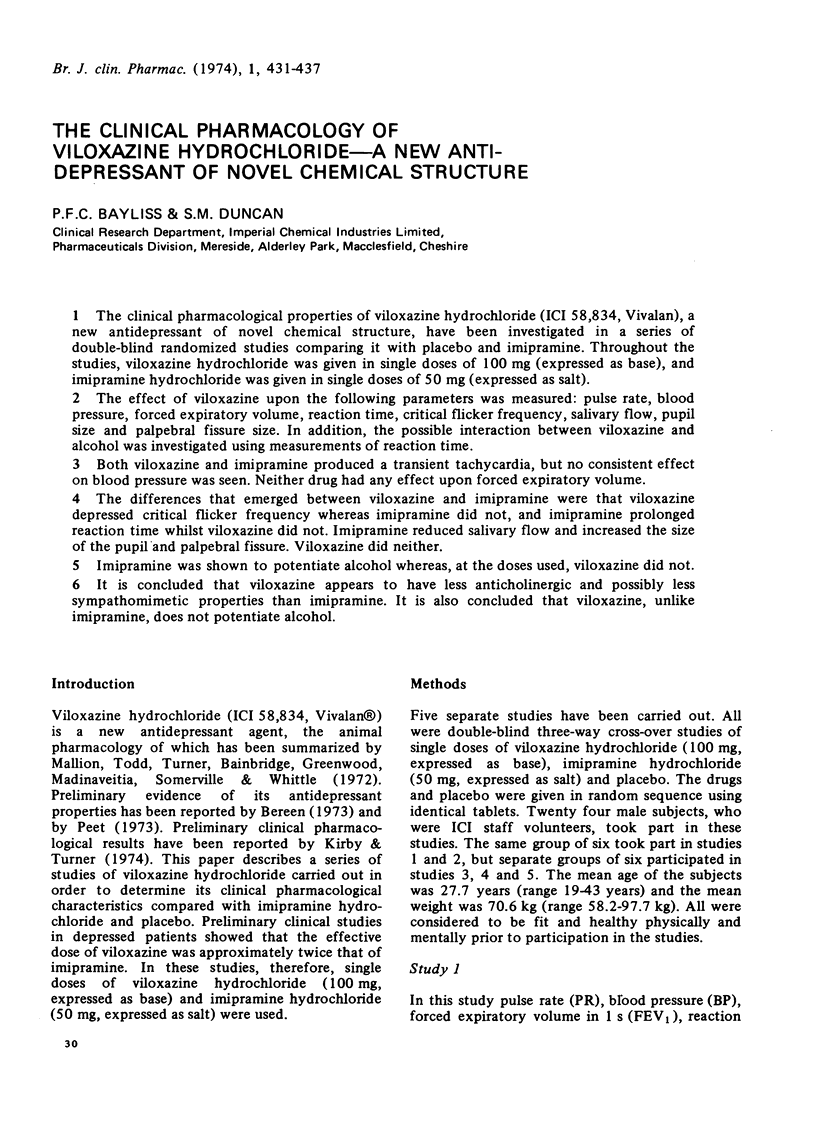
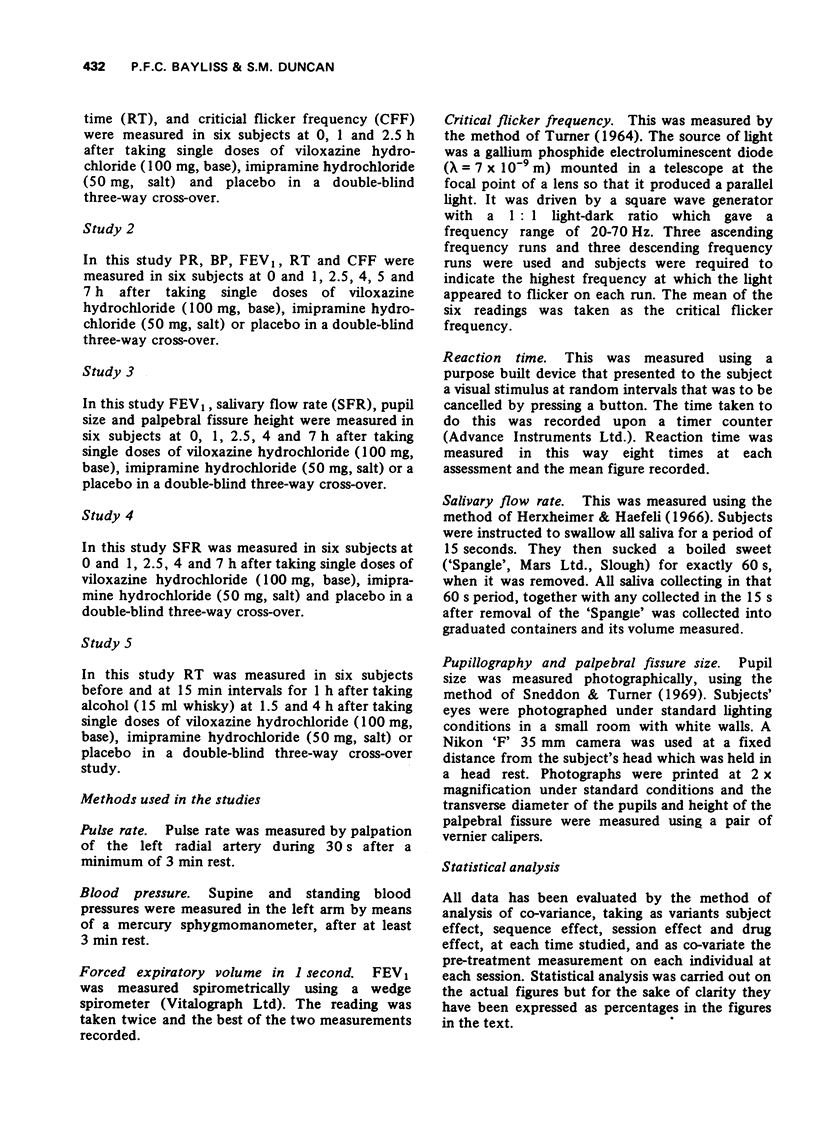
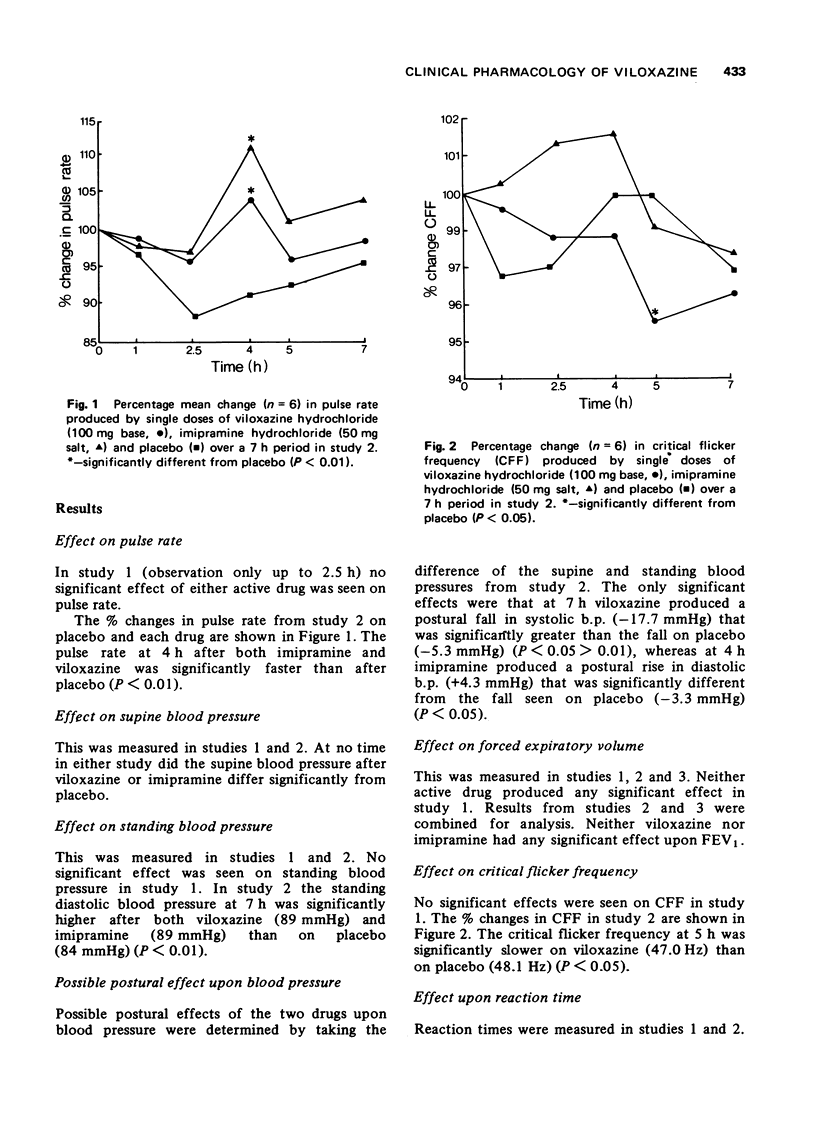
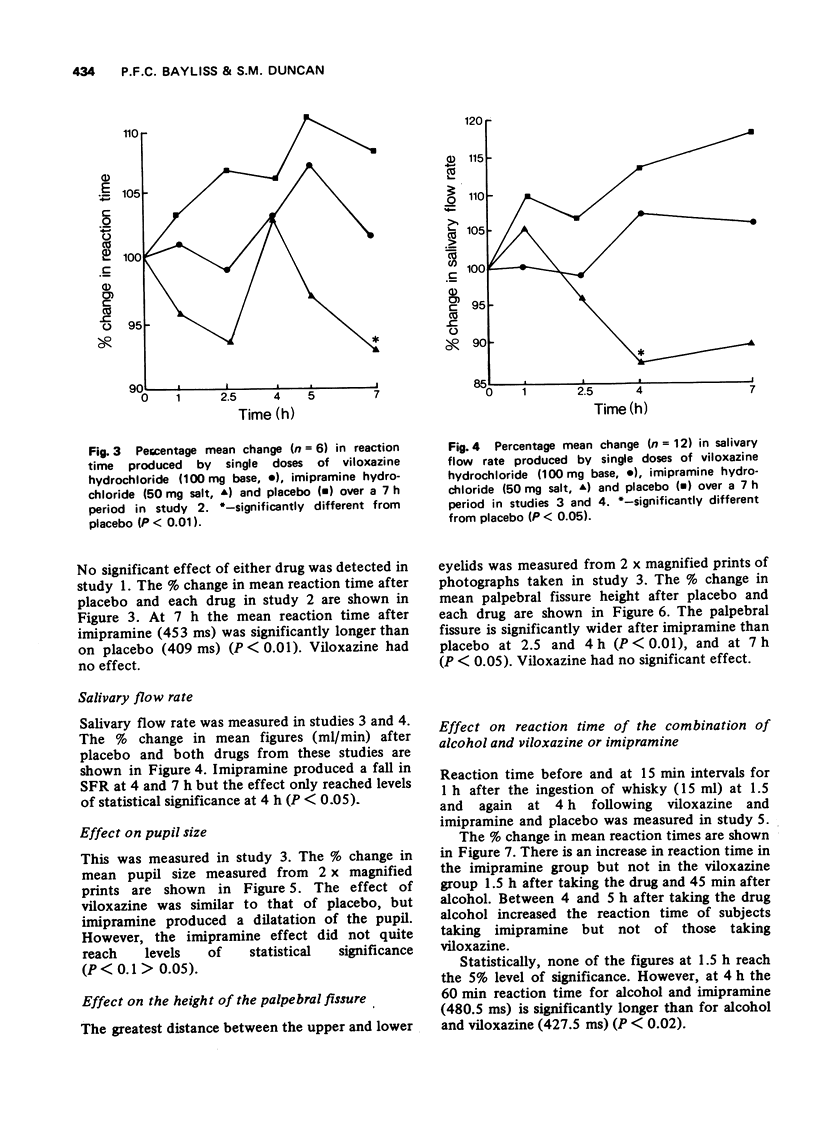
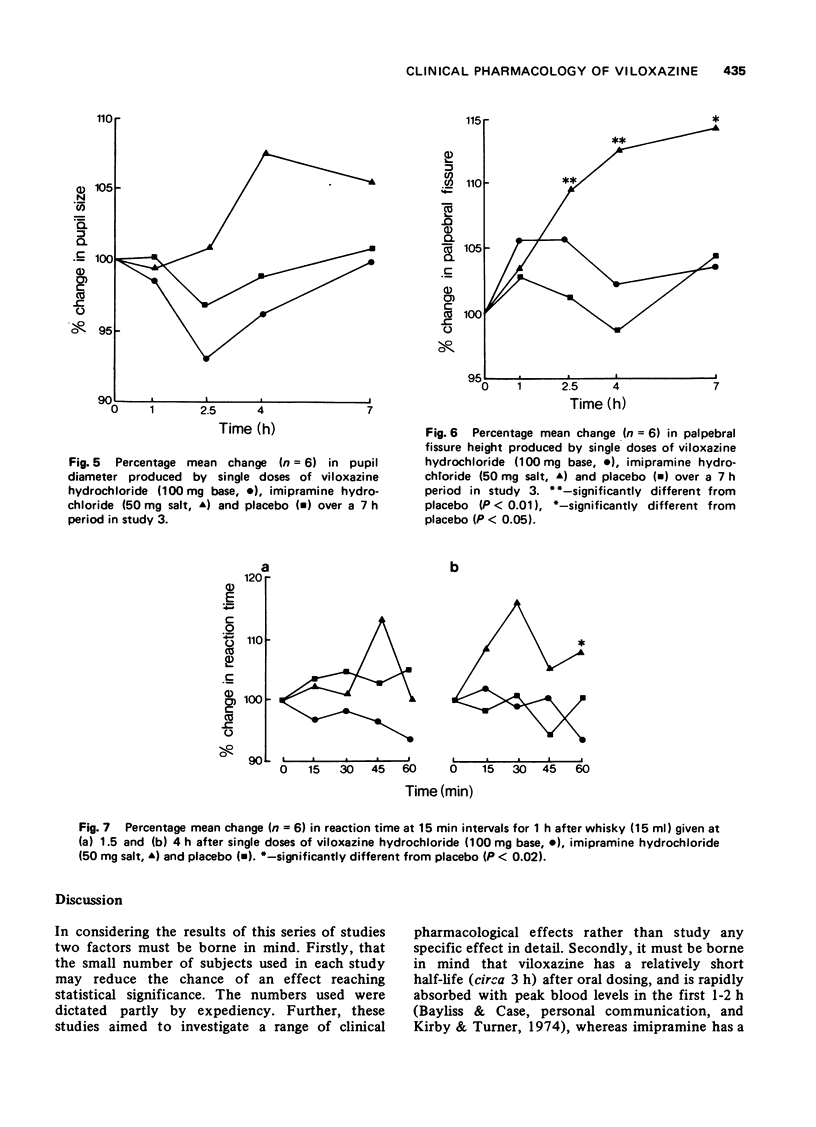
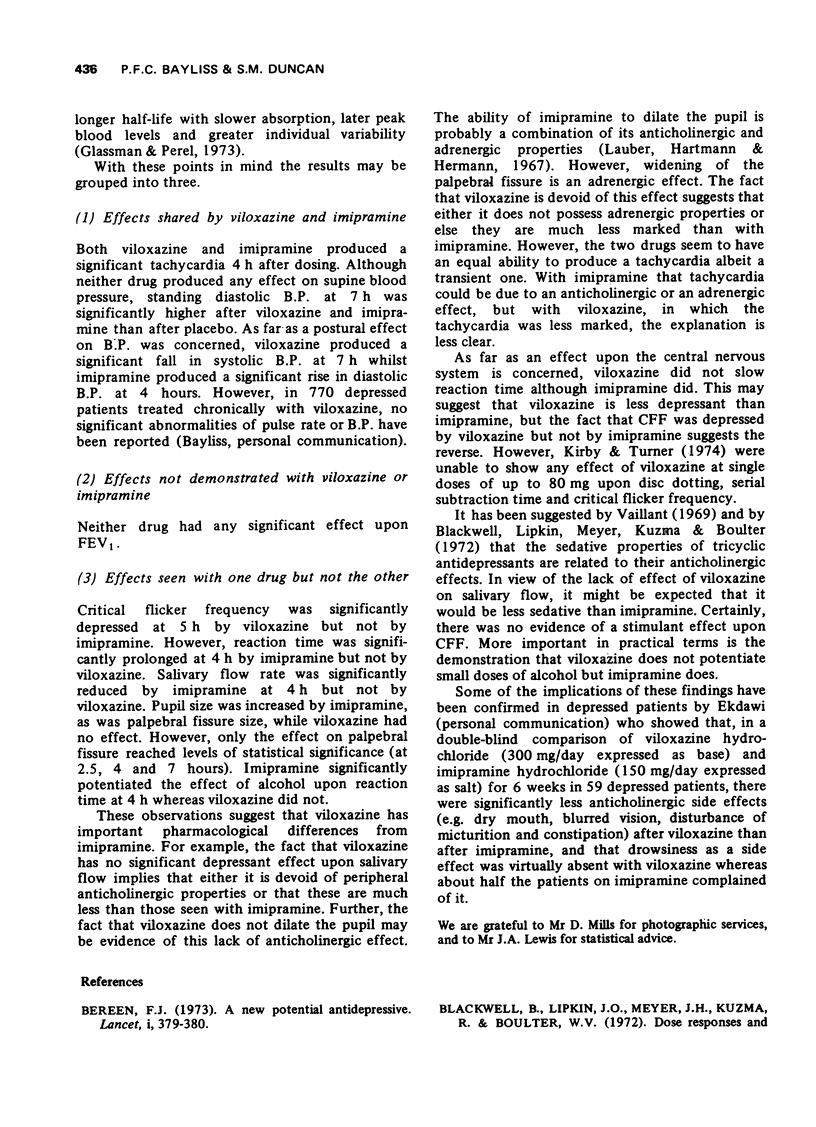
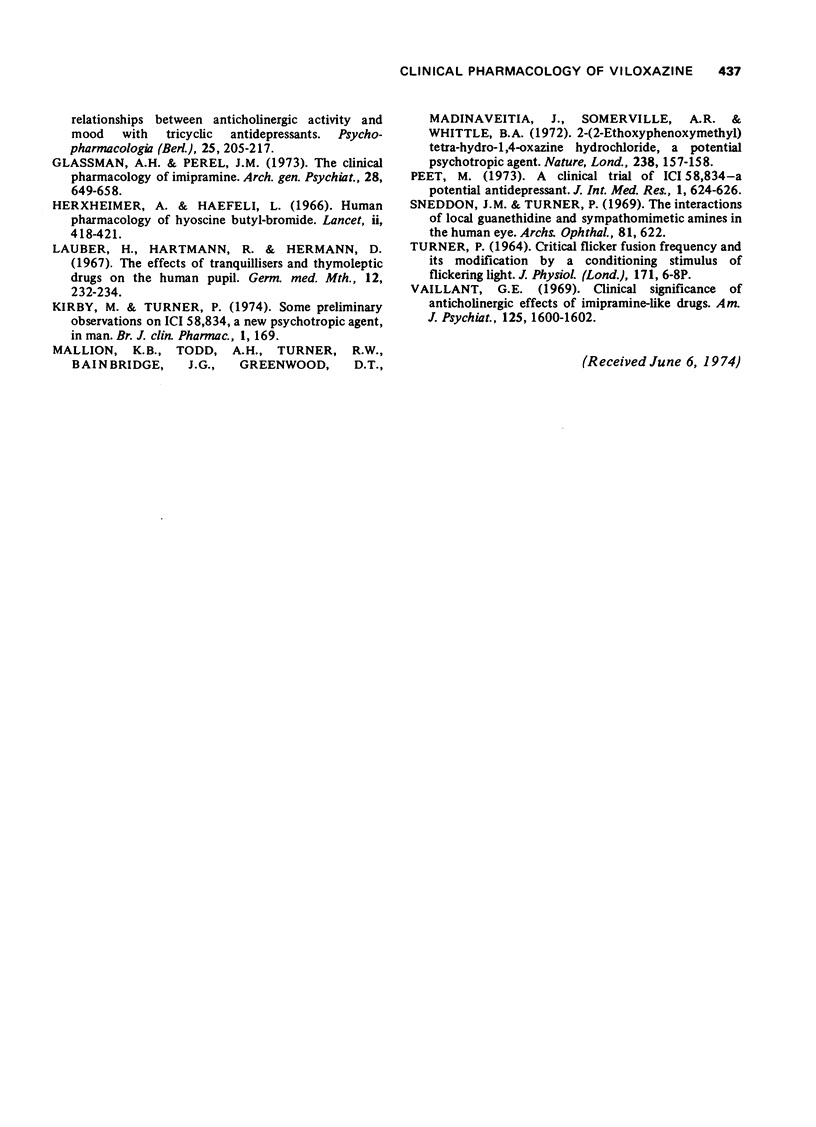
Selected References
These references are in PubMed. This may not be the complete list of references from this article.
- Bereen F. J. A new potential antidepressive. Lancet. 1973 Feb 17;1(7799):379–380. doi: 10.1016/s0140-6736(73)90179-7. [DOI] [PubMed] [Google Scholar]
- Blackwell B., Lipkin J. O., Meyer J. H., Kuzma R., Boulter W. V. Dose responses and relationships between anticholinergic activity and mood with tricyclic antidepressants. Psychopharmacologia. 1972;25(3):205–217. doi: 10.1007/BF00422502. [DOI] [PubMed] [Google Scholar]
- Glassman A. H., Perel J. M. The clinical pharmacology of imipramine. Implications for therapeutics. Arch Gen Psychiatry. 1973 May;28(5):649–653. doi: 10.1001/archpsyc.1973.01750350029006. [DOI] [PubMed] [Google Scholar]
- Lauber H., Hartmann R., Hermann D. [The effects of tranquilizers and thymoleptic drugs on the human pupil]. Ger Med Mon. 1967 May;12(5):232–234. [PubMed] [Google Scholar]
- Mallion K. B., Todd A. H., Turner R. W., Bainbridge J. G., Greenwood D. T., Madinaveitia J., Somerville A. R., Whittle B. A. 2-(2-ethoxyphenoxymethyl)tetrahydro-1,4-oxazine hydrochloride, a potential psychotropic agent. Nature. 1972 Jul 21;238(5360):157–158. doi: 10.1038/238157a0. [DOI] [PubMed] [Google Scholar]
- Sneddon J. M., Turner P. The interactions of local guanethidine and sympathomimetic amines in the human eye. Arch Ophthalmol. 1969 May;81(5):622–627. doi: 10.1001/archopht.1969.00990010624005. [DOI] [PubMed] [Google Scholar]
- Vaillant G. E. Clinical significance of anticholinergic effects of imipramine-like drugs. Am J Psychiatry. 1969 May;125(11):1600–1602. doi: 10.1176/ajp.125.11.1600. [DOI] [PubMed] [Google Scholar]


